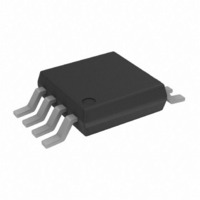AD7922ARMZ Analog Devices Inc, AD7922ARMZ Datasheet - Page 22

AD7922ARMZ
Manufacturer Part Number
AD7922ARMZ
Description
IC ADC 12BIT 1MSPS DUAL 8-MSOP
Manufacturer
Analog Devices Inc
Datasheet
1.AD7922ARM-REEL7.pdf
(32 pages)
Specifications of AD7922ARMZ
Data Interface
DSP, MICROWIRE™, QSPI™, Serial, SPI™
Operating Temperature
-40°C ~ 85°C
Number Of Bits
12
Sampling Rate (per Second)
1M
Number Of Converters
1
Power Dissipation (max)
20mW
Voltage Supply Source
Single Supply
Mounting Type
Surface Mount
Package / Case
8-TSSOP, 8-MSOP (0.118", 3.00mm Width)
Resolution (bits)
12bit
Input Channel Type
Single Ended
Supply Voltage Range - Analogue
2.35V To 5.25V
Supply Current
4mA
No. Of Pins
8
Sampling Rate
1MSPS
Rohs Compliant
Yes
Lead Free Status / RoHS Status
Lead free / RoHS Compliant
For Use With
EVAL-AD7922CBZ - BOARD EVAL FOR AD7922
Lead Free Status / RoHS Status
Lead free / RoHS Compliant
Available stocks
Company
Part Number
Manufacturer
Quantity
Price
Company:
Part Number:
AD7922ARMZ
Manufacturer:
ADI
Quantity:
1 000
Company:
Part Number:
AD7922ARMZ
Manufacturer:
Analog Devices Inc
Quantity:
135
Part Number:
AD7922ARMZ
Manufacturer:
ADI/亚德诺
Quantity:
20 000
Company:
Part Number:
AD7922ARMZ-REEL
Manufacturer:
ADI
Quantity:
1 000
Company:
Part Number:
AD7922ARMZ-REEL7
Manufacturer:
AD
Quantity:
1 560
Part Number:
AD7922ARMZ-REEL7
Manufacturer:
ADI/亚德诺
Quantity:
20 000
AD7912/AD7922
DAISY-CHAIN EXAMPLE
In applications where fast throughput is not critical, connecting
several ADCs in a daisy chain lets the user perform simultane-
ous sampling on all the ADCs contained in the chain using the
minimum number of I/O lines from the µC/DSP ports.
The user needs to alternate modes of operation in the ADCs.
While the parts are in normal mode, the conversion is per-
formed and the result from each ADC is stored in its internal
register. Following the conversion, the parts are placed into
daisy-chain mode and the user can proceed to read the result
from each ADC by shifting the data from one ADC to the next.
For clarity in the following example, only two devices are
connected in a daisy chain. Both AD7912/AD7922 are
addressed by the same CS and SCLK signal. The devices are
configured as shown in Figure 33 for simultaneous conversion
and shifting read operation later. The output of the device on
the left, ADC1, feeds the input of the device on the right, ADC2.
During a normal conversion, the conversion result is stored
internally and output to the DOUT pin. In daisy-chain mode,
the value internally stored is output through the DOUT pin and
the information provided at the DIN pin is shifted into the
internal register.
When several AD7912/AD7922 are connected in a daisy chain,
the sequence is as follows:
1.
2.
3.
Normal conversion.
Every AD7912/AD7922 performs a conversion on its
selected channel and the result is stored in the internal shift
register.
Entering daisy-chain mode.
In this cycle, CS is brought high between the 10th and
12th SCLK falling edges and all the devices enter daisy-
chain mode.
Daisy-chain cycles.
While the AD7912/AD7922 are in daisy-chain mode, the
conversion results from all the devices in the chain are
read, and the parts are configured for the next conversion.
The user needs to perform as many read cycles as there are
devices in the chain. To keep all the AD7912/AD7922 in
daisy-chain mode, the CHN and STY bits in the DIN input
must always be inverted. Data is shifted through the
devices in the chain. Data is clocked into the device in the
chain by the same clock used to clock data out. The first
word clocked into the DIN pin once the devices are in
daisy-chain mode is eventually lost. The second word
clocked into the DIN pin contains the channel configura-
tion data for the last device in the chain, the third word
clocked into the DIN pin contains the channel configura-
Rev. 0 | Page 22 of 32
4.
5.
µC/DSP
tion data for the second last device in the chain, and so on.
Then the selected channel for the first device in the chain is
clocked in the cycle executed after all the data has been
read, that is, in the short cycle used to change modes of
operation. See Figure 34.
Enter normal mode.
After reading the conversion results from the AD7912/
AD7922, the devices need to be placed into normal mode
to perform a new conversion. Therefore, in this cycle CS is
brought high between the 10th and the 13th SCLK falling
edge. The DOUT line contains invalid data and DIN
contains the selected channel for the first device in the
chain. The remaining devices in the chain have already set
the channel for the next conversion as a result of the data
shifted in during daisy-chain mode.
Normal conversion.
A new conversion can be performed on the newly selected
channels. The process can be repeated by following the
previous steps.
Figure 34 shows the timing diagram for two AD7912/
AD7922 connected in a daisy chain, as shown in Figure 33.
The DIN signal corresponds to the DIN pin on the first
AD7912/AD7922 in the chain, and the DOUT signal
corresponds to the DOUT pin on the last AD7912/AD7922
in the chain. The words clocked into the DIN pin, which
set up the channel for the next conversion for the two
AD7912/AD7922, are shown as COMMAND1 and
COMMAND2. The first word clocked in, COMMAND3,
does not remain in any of the ADCs in the chain and is
eventually lost. The channel configuration data for the first
device in the chain, COMMAND1, is clocked in while
changing from daisy-chain mode to normal mode.
Figure 35 is a more detailed diagram that shows the data
presented on the DIN pin and clocked out on the DOUT
pin for each of the AD7912/AD7922 in Figure 33. If the
DOUT1 (or DIN2) signal is ignored, Figure 35 brings
about Figure 34.
SCLK
FSX
DR
TX
Figure 33. AD7912/AD7922 Connected in Daisy Chain
DIN
SCLK
DIN1
SCLK
ADC1
DOUT1
CS
CS
DIN2
SCLK
ADC2
DOUT2
CS
DOUT













